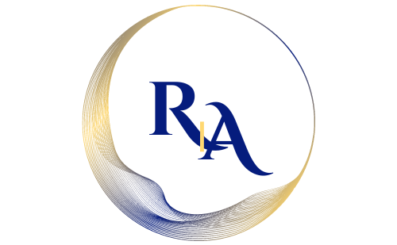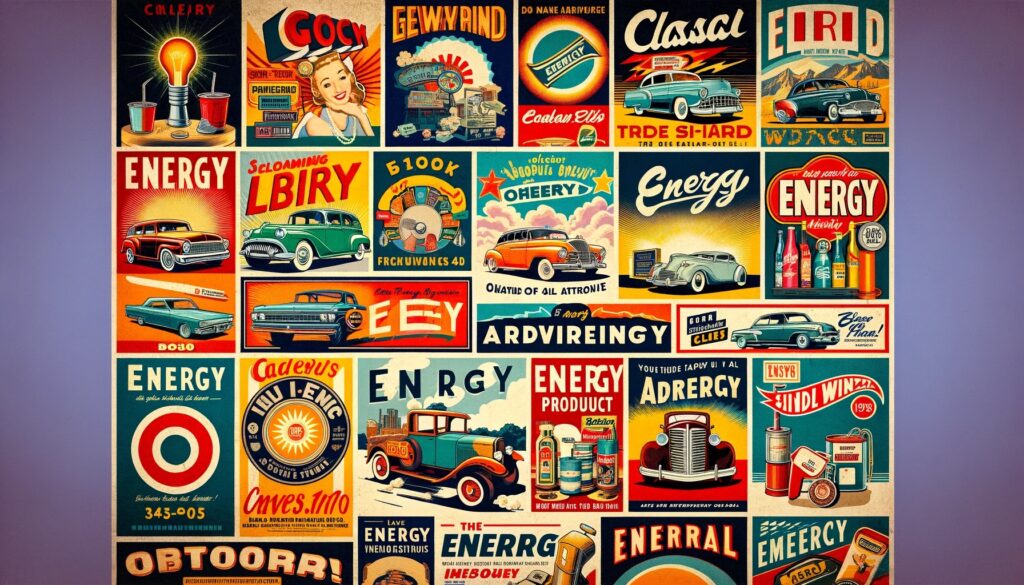The world of energy marketing has undergone a significant transformation over the years, with retro ads serving as a fascinating window into the past. These advertisements not only reflect the marketing trends and strategies of their time but also provide insight into the cultural and technological shifts in society. By examining these retro ads, we can trace the evolution of energy marketing and understand how it has shaped the public’s perception of energy consumption and conservation.
The Golden Era of Energy Advertising
The Rise of Mass Media and Energy Ads
The golden era of energy advertising coincided with the rise of mass media, particularly during the mid-20th century. Television and radio became dominant platforms, and energy companies leveraged these media to reach a broad audience. The ads from this era often featured catchy jingles and memorable slogans, aiming to embed the brand into the consumer’s daily life. These ads emphasized the benefits of modern energy solutions, portraying them as symbols of progress and comfort.
Focusing on the Domestic Bliss
Energy advertisements in the golden era frequently focused on the concept of domestic bliss. They showcased how energy products and services could enhance home life, offering convenience and efficiency. These ads often depicted idyllic family scenes, reinforcing the idea that energy consumption was key to achieving a comfortable and modern lifestyle. The imagery and messaging were designed to resonate with the aspirations of the average consumer at the time.
Energy as a Symbol of National Prosperity
Another common theme in energy advertising during this period was the portrayal of energy as a symbol of national prosperity and development. Ads often highlighted the role of energy in driving industrial growth and improving living standards. This approach was particularly prevalent during periods of economic boom, where energy consumption was equated with patriotic duty and a contribution to national progress.
The Artistic and Design Evolution in Ads
The artistic and design elements of energy ads also evolved during the golden era. There was a shift from simple text-based ads to more visually appealing designs incorporating vibrant colors and graphics. The use of compelling imagery and creative layouts made these ads more engaging and memorable. This period also saw the introduction of mascot characters and brand ambassadors, adding a personal touch and building a rapport with consumers.
The golden era of energy advertising reflects a time when energy consumption was synonymous with modernity and progress. These retro ads not only promoted products and services but also shaped societal attitudes towards energy use. Today, they offer valuable insights into the historical context of energy marketing and its impact on consumer behavior. As we continue to explore the evolution of energy marketing, these vintage advertisements serve as reminders of how far the industry has come in terms of technology, strategy, and societal values.
How Energy Marketing Has Changed
The landscape of energy marketing has undergone significant transformation over the years, driven by evolving technology, shifting consumer preferences, and the growing importance of sustainability. This change reflects not just in the way energy products are advertised and sold, but also in how consumers perceive and interact with energy brands. In this section, we delve into the various facets of this evolution and understand how modern energy marketing strategies differ from those of the past.
The Shift from Traditional to Digital Marketing
One of the most significant changes in energy marketing is the shift from traditional methods, like print and broadcast media, to digital platforms. With the advent of the internet and social media, energy companies now have a plethora of tools at their disposal for targeted advertising, content marketing, and direct engagement with customers. Digital marketing allows for more personalized communication and enables companies to reach a wider, yet more specific, audience effectively.
Emphasis on Sustainability and Green Energy
The growing concern about environmental issues has led to a notable shift in energy marketing, with an increased emphasis on sustainability and green energy solutions. Modern marketing campaigns often highlight the eco-friendliness of products and services, catering to a consumer base that is more environmentally conscious. This trend is not just a marketing tactic but also reflects the broader shift in the energy sector towards renewable sources and sustainable practices.
The Role of Customer Engagement and Education
Today’s energy marketing places a strong emphasis on customer engagement and education. Energy companies are increasingly using their platforms to educate consumers about energy efficiency, conservation, and the benefits of new technologies like smart home systems. This approach not only helps in building brand loyalty but also empowers consumers to make informed decisions about their energy usage.
Utilizing Data Analytics for Strategic Marketing
Data analytics has become a cornerstone of modern energy marketing. By analyzing customer data, energy companies can gain insights into consumption patterns, preferences, and behaviors. This information is invaluable in designing targeted marketing campaigns, developing new products, and improving customer service. The use of big data and analytics has transformed energy marketing into a more data-driven and result-oriented practice.
The evolution of energy marketing reflects the dynamic nature of the industry and its adaptation to the changing technological and social landscape. From traditional advertising to digital campaigns, and a focus on sustainability to data-driven strategies, energy marketing continues to evolve, offering new challenges and opportunities for energy companies in engaging with their audience.
Iconic Energy Ads and Their Impact
The advertising world has seen some iconic energy ads that have not only caught the public’s eye but also significantly influenced consumer perceptions and industry trends. These advertisements, often memorable for their creativity, emotional appeal, or innovative messaging, have played a crucial role in shaping the public’s understanding and consumption of energy products and services. This section explores some of these iconic ads and examines the impact they have had on both the energy sector and advertising as a whole.
Ads that Highlighted Convenience and Modern Lifestyle
Some of the most iconic energy ads were those that linked energy consumption with a modern and convenient lifestyle. These ads often featured imagery of happy families enjoying the comforts of their homes, thanks to the energy products being advertised. The impact of these ads was significant; they not only boosted sales but also cemented the idea that a modern lifestyle was synonymous with increased energy consumption.
Campaigns Emphasizing Environmental Responsibility
In recent years, several energy companies have released ads that focus on environmental responsibility and sustainability. These campaigns are designed to align the company’s brand with the growing public concern for the environment. Such ads often feature clean energy solutions like wind or solar power and highlight the company’s commitment to reducing carbon footprints. The impact of these ads is twofold: they improve the brand image and also raise public awareness about sustainable energy sources.
Ads Leveraging Technological Innovations
Some iconic ads in the energy sector have been groundbreaking due to their use of technological innovations. This includes the use of augmented reality, virtual reality, and interactive elements that engage the audience in an immersive experience. These ads are not just promotional tools but also serve to educate the public about new technologies in energy production and management. The impact of these technologically advanced ads is significant in terms of brand differentiation and customer engagement.
The Role of Nostalgia in Energy Advertising
Nostalgia plays a powerful role in advertising, and the energy sector is no exception. Iconic ads that hark back to simpler times or that remind viewers of the company’s long history and reliability have a lasting impact. They evoke an emotional response and build trust in the brand. These ads often resonate with a wide range of audiences and create a sense of familiarity and loyalty towards the brand.
The impact of these iconic energy ads extends beyond mere product promotion. They influence consumer attitudes, drive industry trends, and sometimes even spark public debate on important issues like environmental conservation. As the energy sector continues to evolve, so will the nature of its advertising, reflecting changing consumer values and technological advancements. These iconic ads, with their lasting impact, are an integral part of the history and future of energy marketing.
The Future of Energy Marketing Strategies
As the energy industry continues to evolve, so too do the strategies used to market its products and services. The future of energy marketing is shaping up to be a landscape where digital innovation, personalized customer experiences, and sustainability play pivotal roles. This evolution is not only driven by technological advancements but also by changing consumer attitudes and global environmental concerns. Let’s explore the key elements that are expected to define the future of energy marketing strategies.
Embracing Digital Transformation and Online Platforms
Digital transformation is at the forefront of the future of energy marketing. The increasing use of online platforms for customer engagement, from social media to specialized apps, is changing how energy companies interact with their customers. These platforms allow for more direct and personalized communication, enabling companies to tailor their messages and offers to individual consumer needs and preferences. Additionally, the use of digital channels facilitates the gathering of valuable customer data, which can be analyzed to further refine marketing strategies and offerings.
Integrating Advanced Data Analytics and AI
Advanced data analytics and artificial intelligence (AI) are becoming integral to energy marketing strategies. By leveraging these technologies, energy companies can gain deeper insights into consumer behavior, predict market trends, and optimize their marketing efforts. AI can be used to personalize customer interactions, improve service recommendations, and even predict and resolve issues before they arise. This data-driven approach will enable energy companies to be more proactive and customer-centric in their marketing efforts.
Focusing on Sustainability and Eco-Friendly Practices
Sustainability is a growing concern among consumers, and this is reflected in their buying decisions. Energy companies are increasingly incorporating sustainability into their marketing strategies, highlighting eco-friendly practices, renewable energy sources, and energy efficiency. Marketing campaigns that emphasize a company’s commitment to reducing carbon footprints and contributing to a greener future are likely to resonate more with environmentally conscious consumers.
Leveraging Personalization and Customization
The future of energy marketing will see a stronger emphasis on personalization and customization. Consumers are looking for solutions that cater to their specific needs and lifestyles. Energy companies will likely shift towards offering more customized energy solutions and flexible pricing plans. Personalized marketing campaigns, using data-driven insights to tailor messages and offers to individual consumers, will become more prevalent.
Strengthening Customer Engagement through Interactive Experiences
Engaging customers through interactive and immersive experiences is another trend that is gaining traction in energy marketing. Virtual reality (VR) and augmented reality (AR) technologies can be used to create engaging and educational experiences that help consumers understand and visualize the benefits of different energy solutions. Interactive tools and platforms that allow consumers to track their energy consumption and savings in real-time can also enhance engagement and foster a deeper connection with the brand.
In conclusion, the future of energy marketing strategies is set to be dynamic, with a strong focus on digital innovation, data-driven personalization, sustainability, and interactive customer engagement. As the energy sector continues to adapt to these changing trends, companies that embrace these new approaches are likely to gain a competitive edge and forge stronger connections with their customers.

